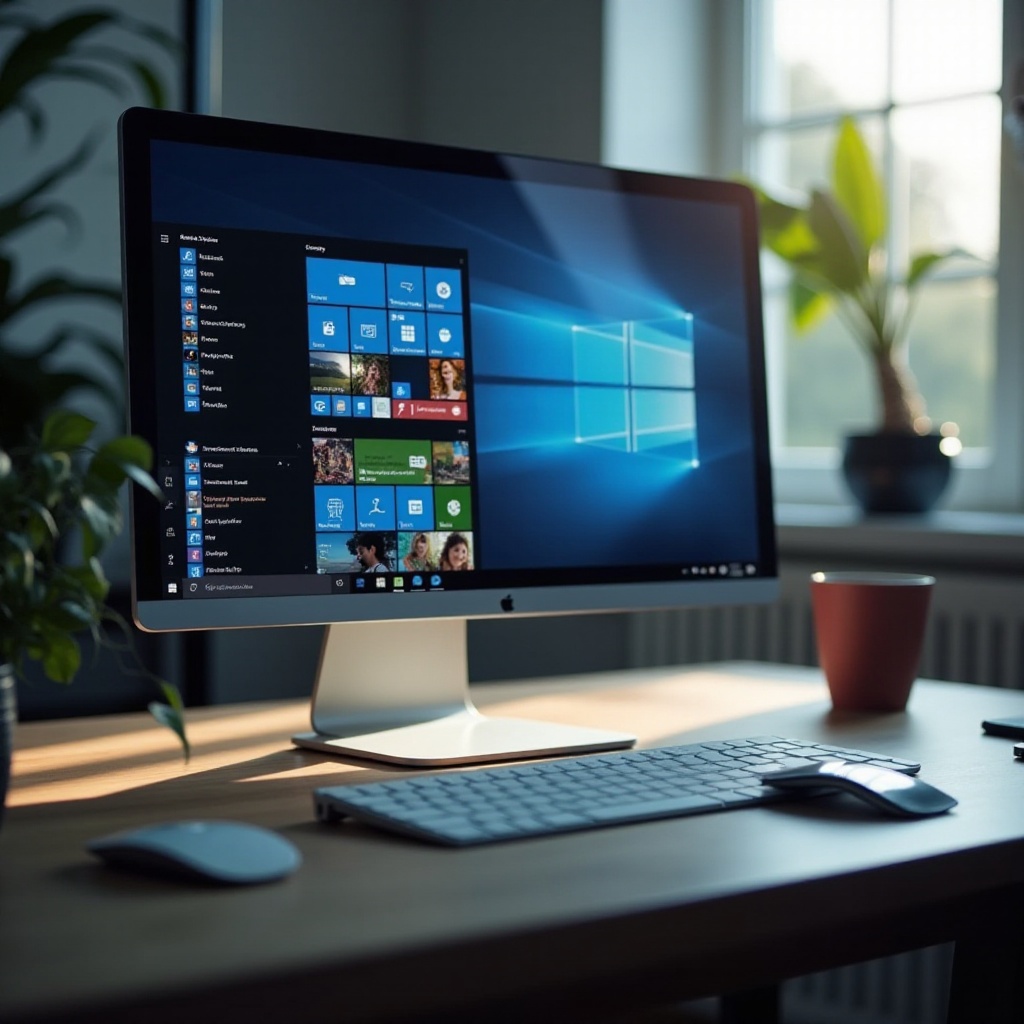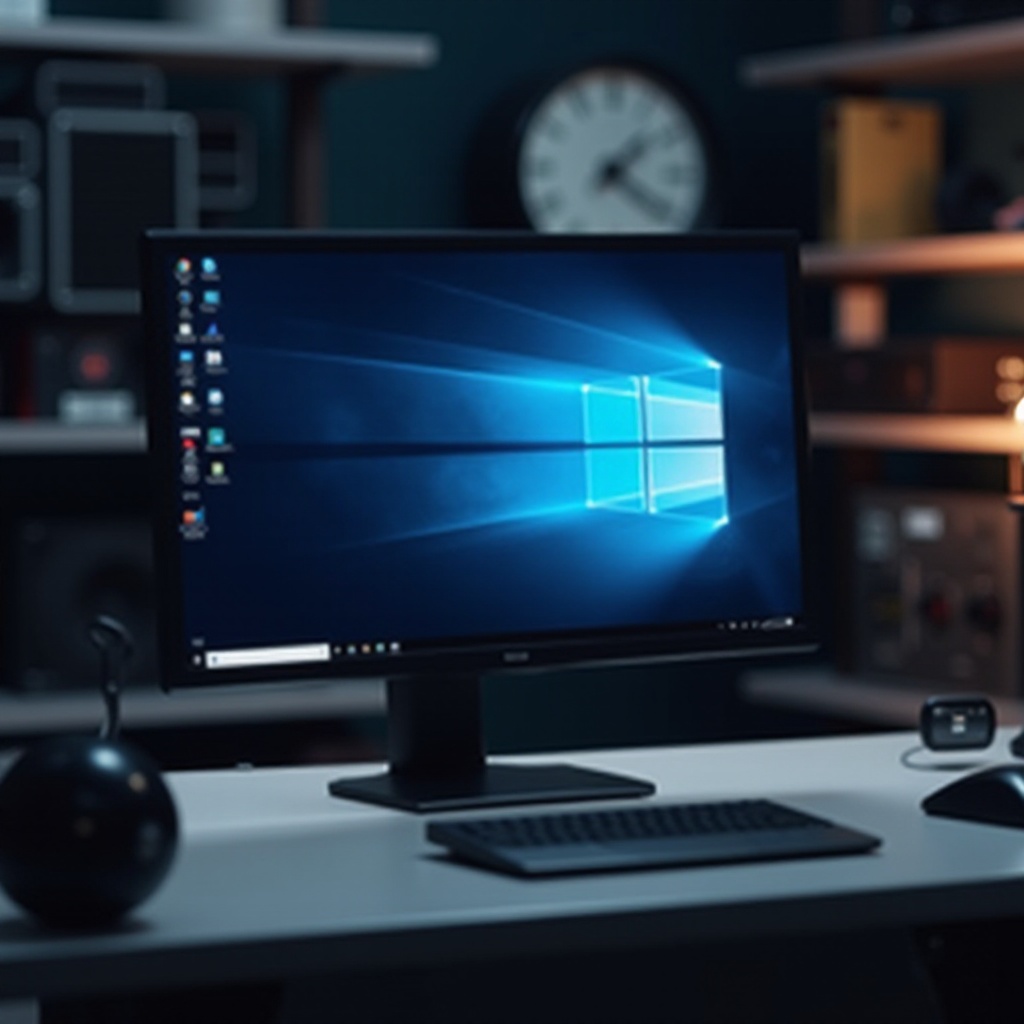Introduction
Windows 11 introduces a sleek design and a range of new features, yet understanding essential operations like performing a full shutdown is crucial for preserving system health. A full shutdown powers off your system entirely, ensuring updates are applied correctly and providing your hardware with a necessary break. This guide explains the significance of full shutdowns, step-by-step instructions to execute them, troubleshooting common issues, and automating the shutdown process for enhanced convenience. With this comprehensive knowledge, you can manage your Windows 11 PC more efficiently, maintaining optimal performance and stability.

Why a Full Shutdown Matters
A full shutdown goes beyond the common shutdown options like sleep or hibernate. Shutting down fully powers off your computer, stopping all processes and ensuring your hardware resets entirely. This functionality is critical for various reasons. Firstly, it’s vital for the successful installation of software updates, which often necessitate a restart or full shutdown to install correctly. Secondly, it aids in freeing up system resources, avoiding performance sluggishness due to lengthy uptime. Furthermore, a complete shutdown can resolve minor software glitches and refresh your system memory, enhancing your user experience. Regular full shutdowns also extend the lifespan of your hardware components by minimizing continuous electricity flow.
Transitioning smoothly, next, we discuss the various methods to perform a full shutdown in Windows 11, ensuring you can choose the most convenient option for your needs.
How to Execute a Full Shutdown in Windows 11
There are multiple methods to perform a full shutdown in Windows 11. Whether you utilize the conventional Start Menu or the more technical avenues like Command Prompt or PowerShell, each method provides a straightforward way to power down your PC thoroughly.
Standard Method via Start Menu
- Click on the Windows icon in the taskbar to access the Start Menu.
- Select the Power button.
- Choose Shut down from the available options to initiate a full shutdown.
Using Command Prompt
- Press Windows + R to launch the Run dialog box.
- Type cmd and press Enter to open Command Prompt.
- Enter
shutdown /s /f /t 0and press Enter. /sis for shutdown./fforces running applications to close./t 0sets the timer to zero, meaning it will shut down immediately.
Shutdown via Windows PowerShell
- Right-click the Start Menu button and select Windows Terminal (Admin) or Windows PowerShell (Admin).
- Type
Stop-Computerand hit Enter. This command activates a full shutdown.
After understanding how to execute a full shutdown, we now segue into addressing common shutdown problems in Windows 11, providing guidance for troubleshooting when issues arise.

Troubleshooting Common Shutdown Issues
Occasionally, Windows 11 may not shut down as expected. By understanding and addressing these issues, you can prevent future inconveniences.
Identifying Shutdown Problems
Problems that inhibit shutdown often include unresponsive applications, pending updates, or background processes failing to close. Recognizing these symptoms can help you implement solutions more quickly.
Quick Fixes and Advanced Solutions
- Check for Updates: Confirm all Windows updates are installed before shutting down.
- End Background Processes: Use Task Manager to close any unresponsive applications.
- Disable Fast Startup: Navigate to Control Panel > Power Options > Choose what the power buttons do, then uncheck Fast Startup.
- Repair System Files: Run the command
sfc /scannowin Command Prompt to scan and repair any corrupted files. - Advanced Settings: Consider altering BIOS settings if shutdown issues persist, obtaining professional assistance if required.
Seamlessly connecting, the following section outlines how automating shutdowns in Windows 11 can offer benefits in convenience and efficiency.

Automating Full Shutdowns in Windows 11
Automating shutdown processes can significantly enhance efficiency, especially if you want your PC to power down upon completing tasks or at predetermined times.
Using Task Scheduler for Scheduled Shutdowns
- Open Task Scheduler by searching for it in the Start Menu.
- Click Create Basic Task.
- Name your task and configure the trigger (daily, weekly, etc.).
- In the Action section, select Start a Program and input
shutdown.exewith the argument/s /f /t 0.
Third-Party Software Options
Explore third-party software like Wise Auto Shutdown for more advanced scheduling features. These tools provide user-friendly interfaces for setting automatic shutdowns with additional functionalities.
Comprehending the methods to automate full shutdowns seamlessly bridges into the next topic, summarizing the benefits and highlighting the comprehensive nature of the process.
Conclusion
Mastering the art of full shutdowns in Windows 11 is essential for maintaining your system’s health and optimizing its performance. By following the outlined methods, effectively troubleshooting, and scheduling shutdowns when needed, you’ll improve your Windows experience, ensuring your PC always operates in peak condition.
Frequently Asked Questions
What is the difference between a full shutdown and hibernate in Windows 11?
A full shutdown completely turns off the PC, while hibernate saves the current state to the hard drive, allowing for a faster startup without using power.
Can I schedule automatic full shutdowns in Windows 11?
Yes, you can use Task Scheduler or third-party software to schedule automatic shutdowns, providing convenience for managing power usage.
What should I do if Windows 11 doesn’t shut down completely?
Try checking for updates, closing background processes, disabling Fast Startup, and repairing system files. If problems persist, seek professional help.
